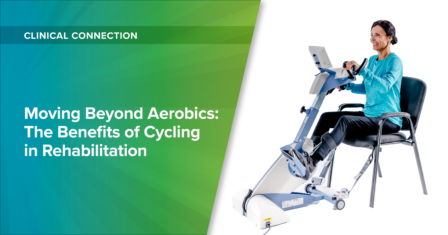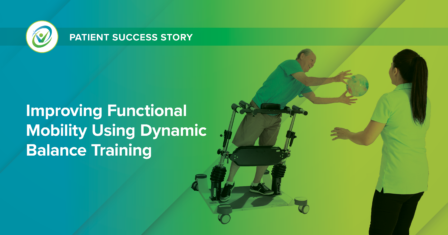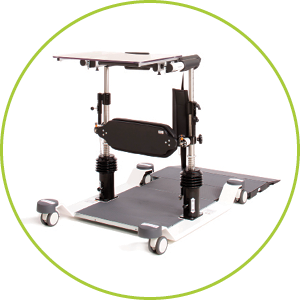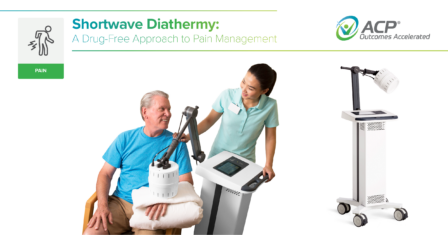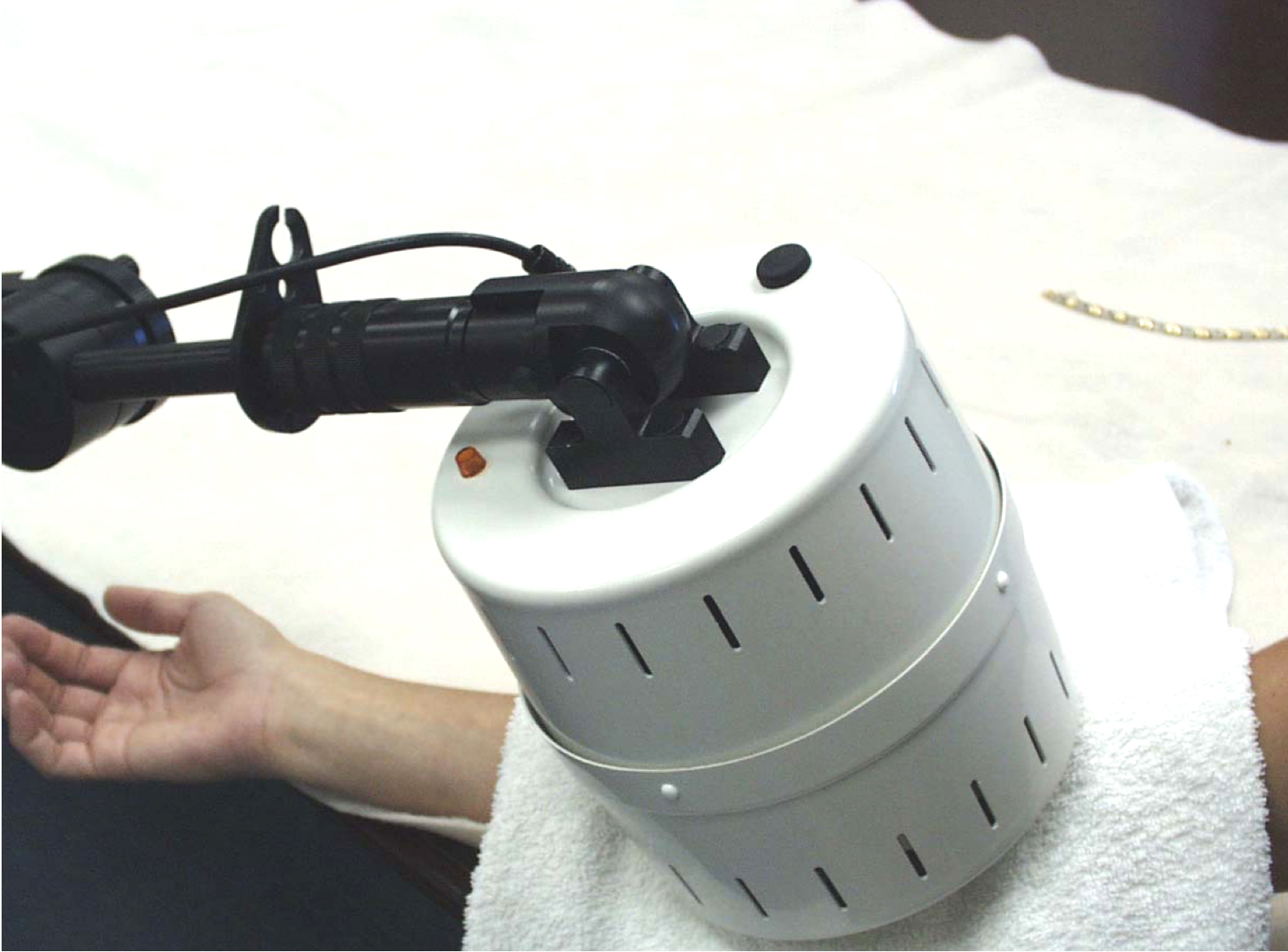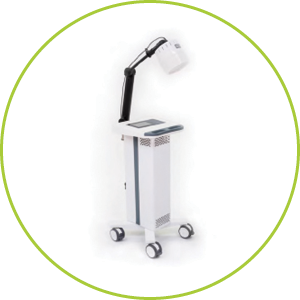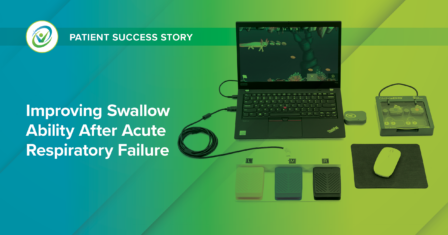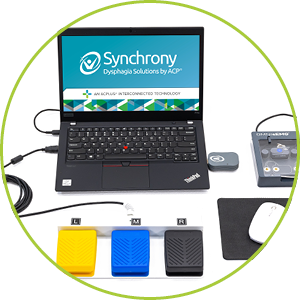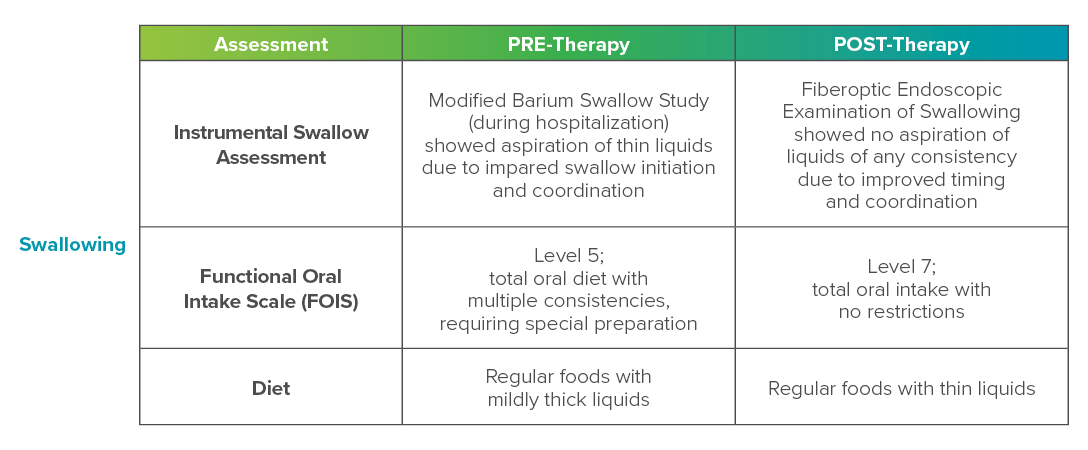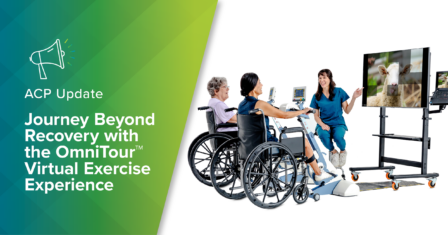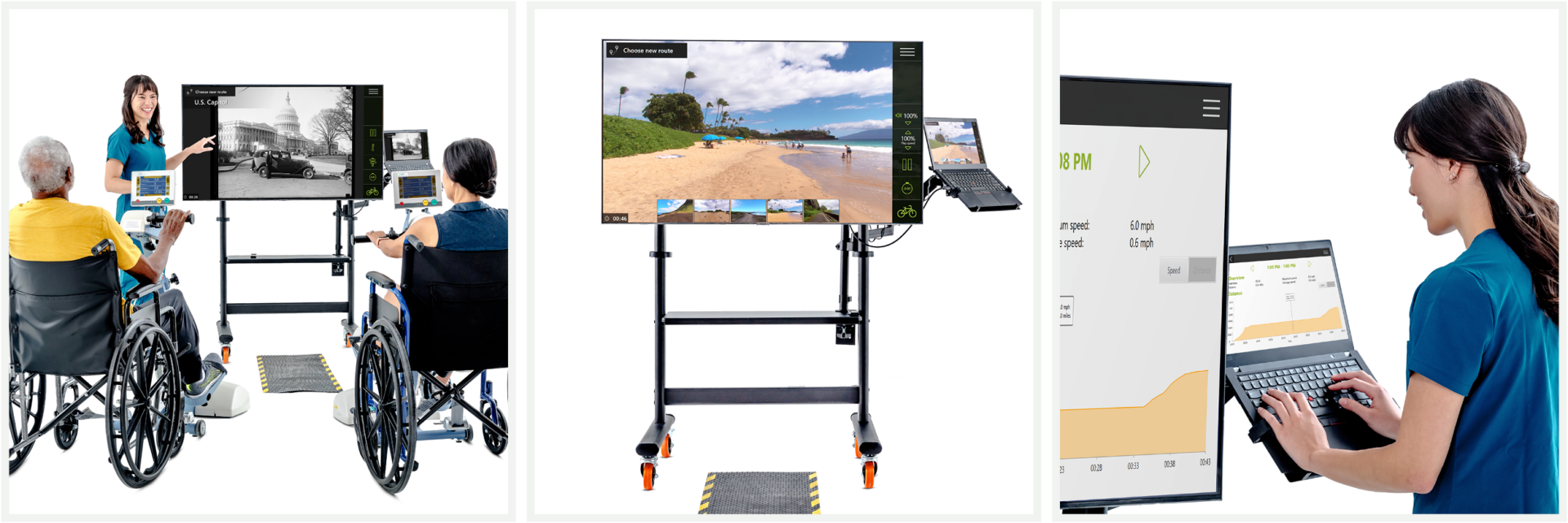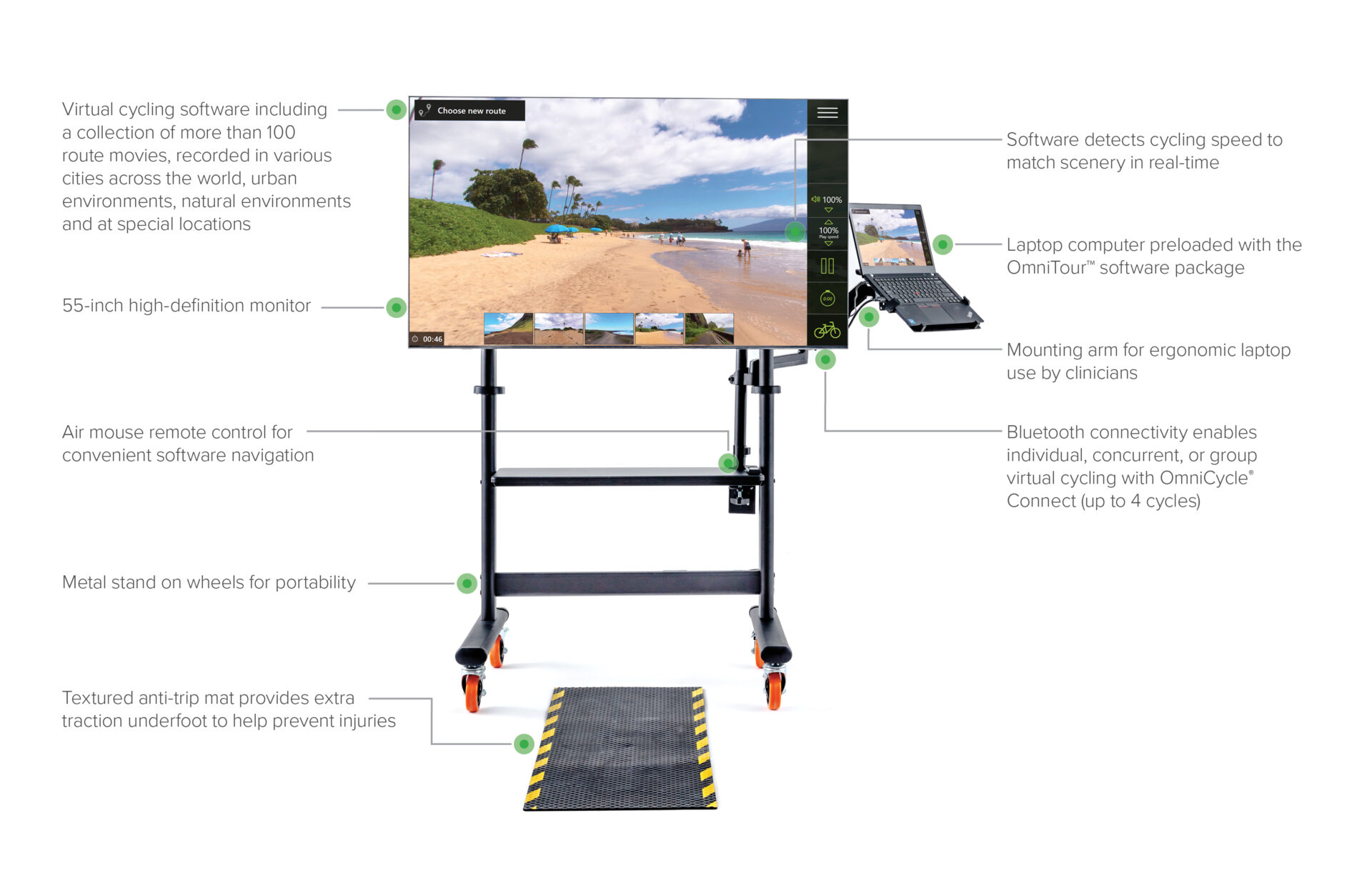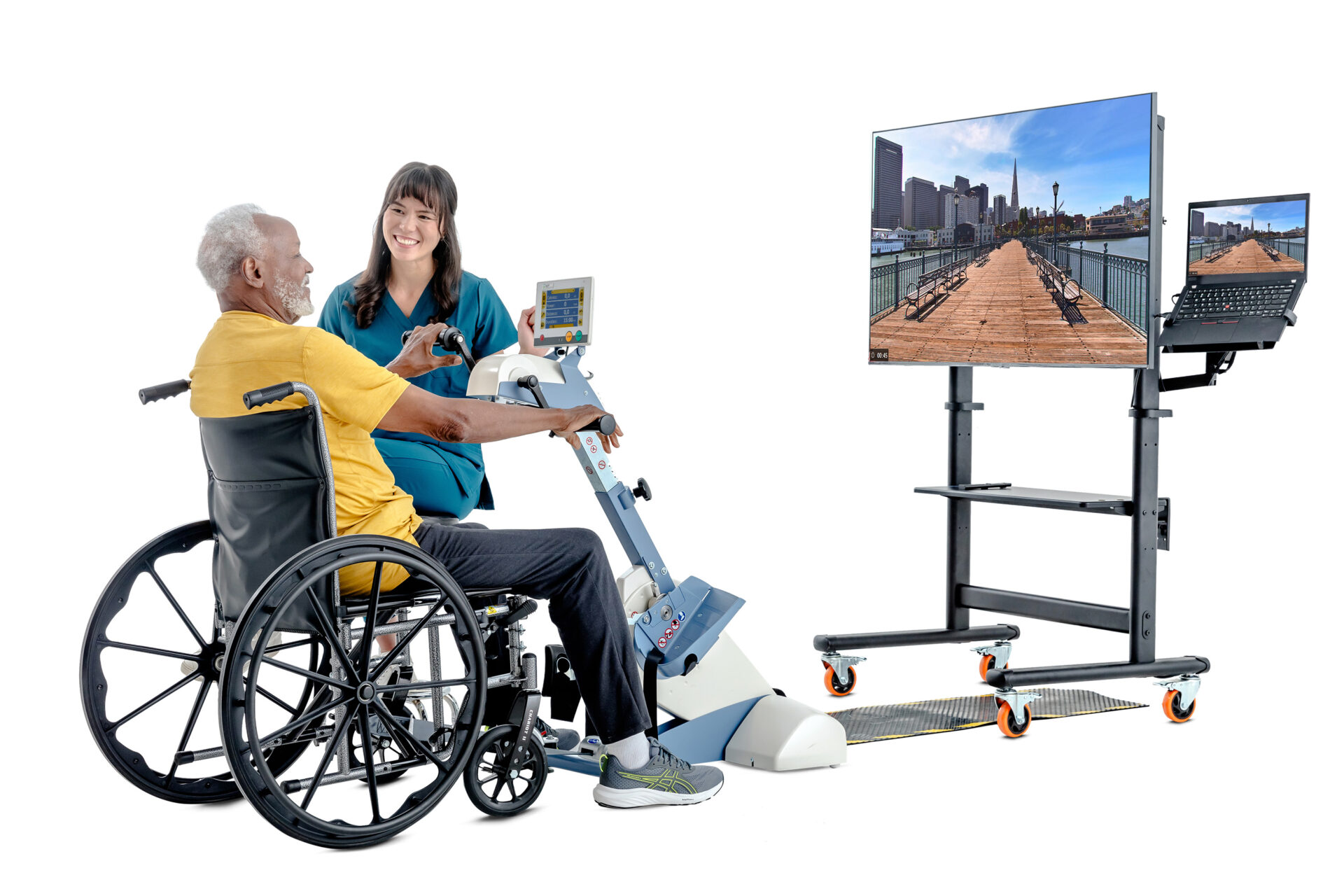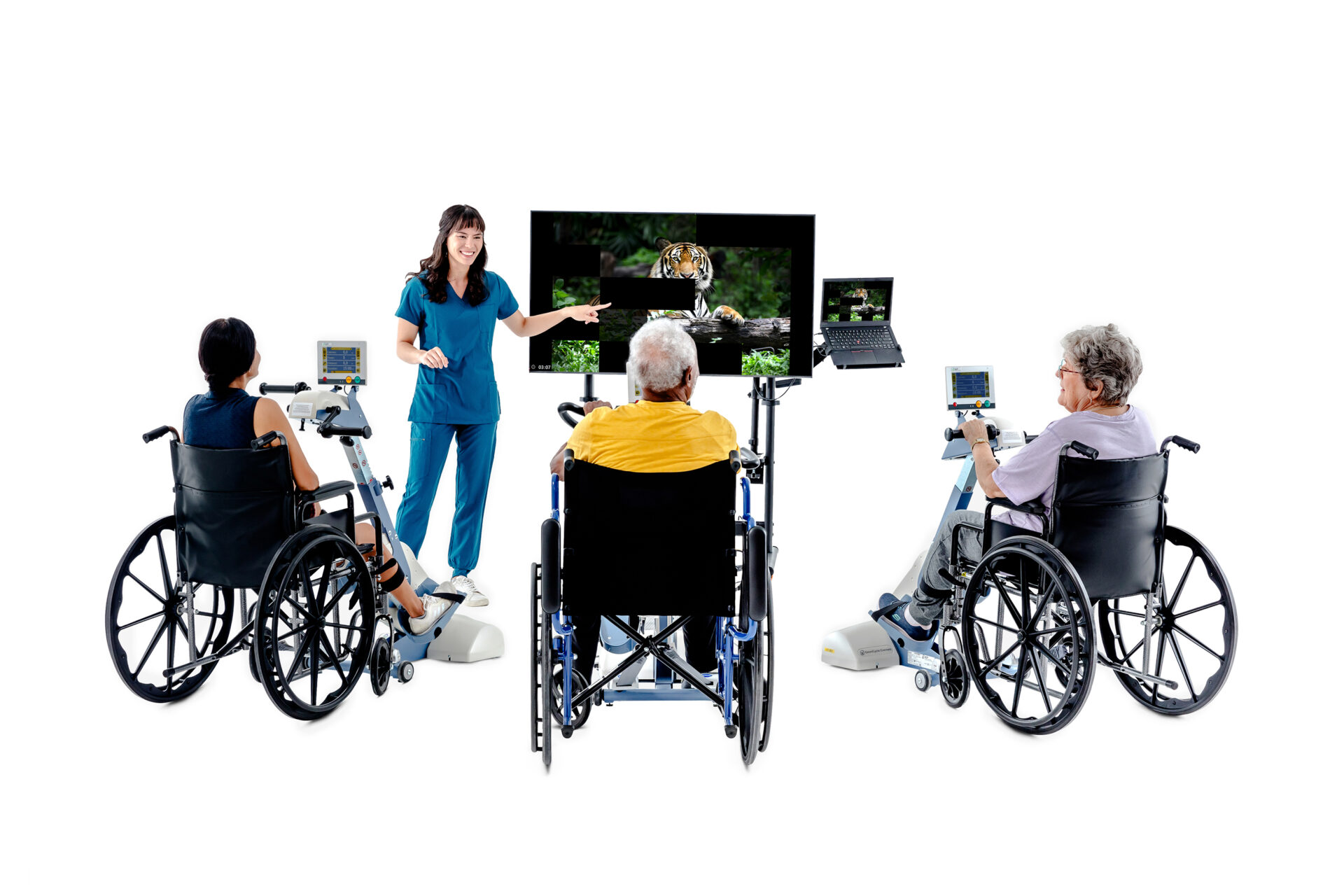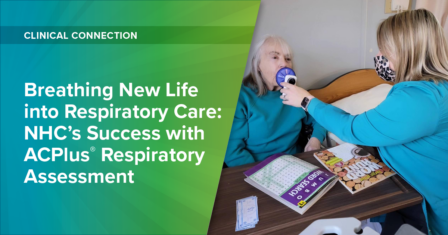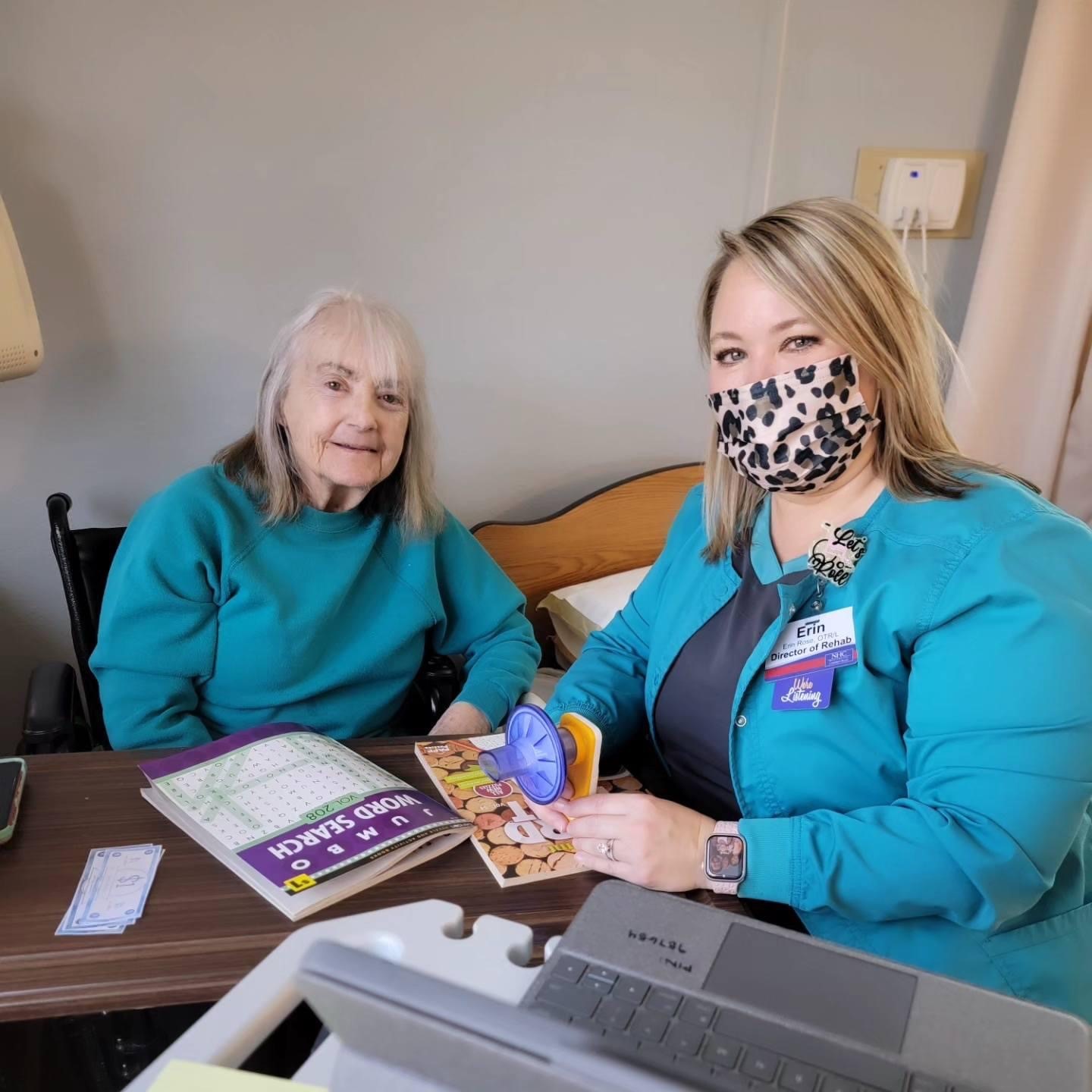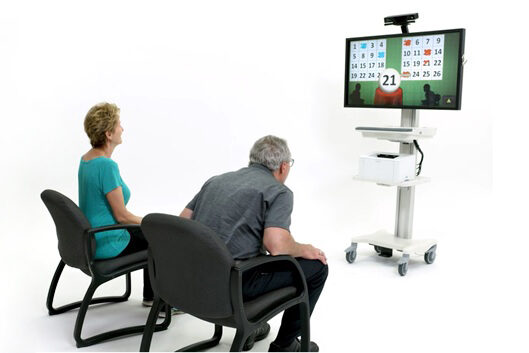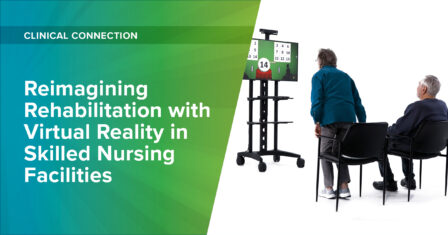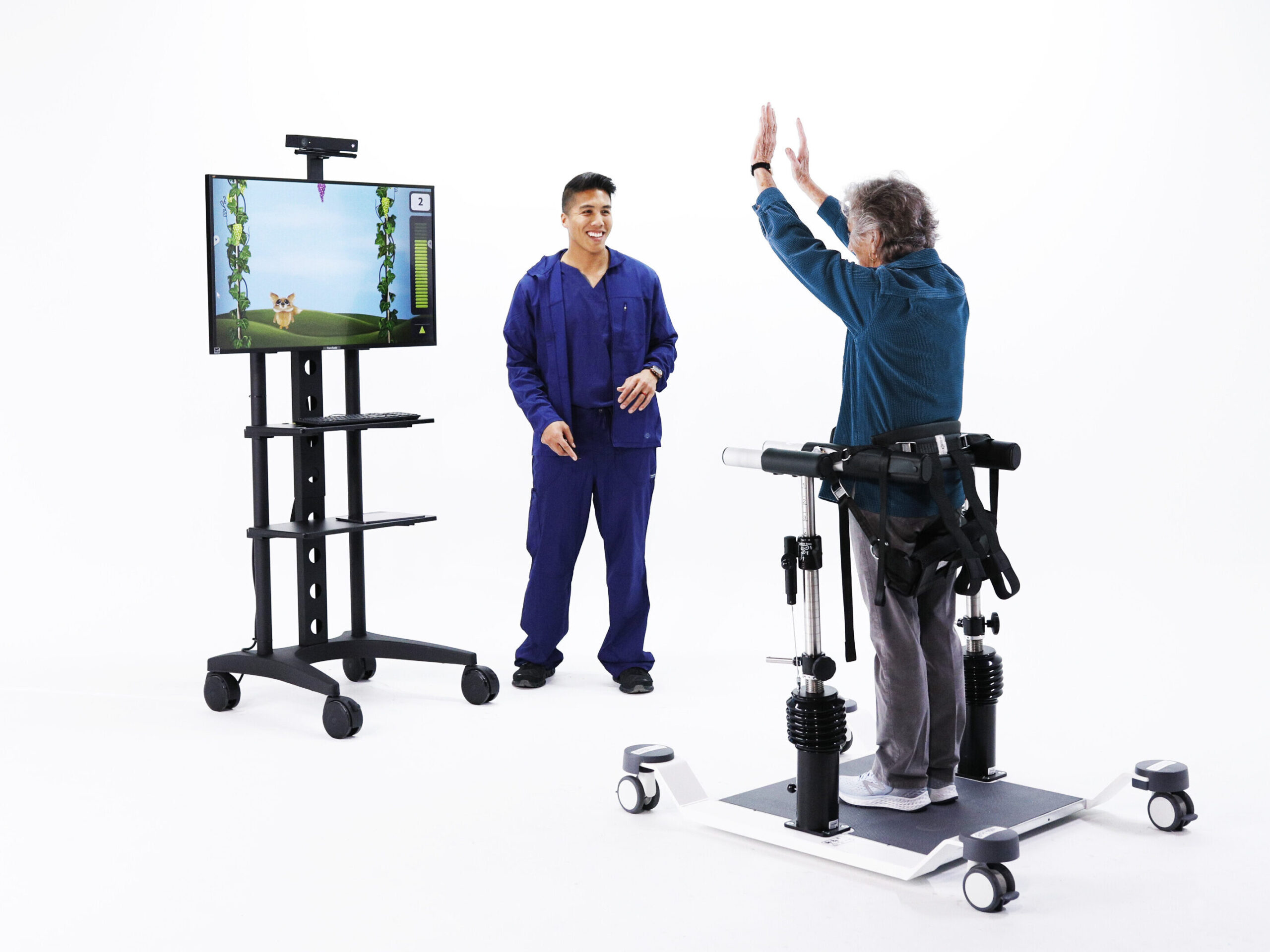While it’s been proven that cycling is an effective rehab tool for building aerobic capacity and improving strength1, its benefits extend far beyond—from improving gait and core stability to boosting mental health and cognitive function. Keep reading to learn why cycling is a key component of many of our evidence-based clinical programs and how to incorporate it into your rehab program to enhance patient outcomes and quality of life.
1. Preparing for Gait Training
Cycling is an excellent pre-gait activity that helps patients improve their motor control and reciprocal patterning for leg movement and arm swing. It also helps improve gait characteristics like limb symmetry, step length, speed, and distance. Cycling can also reduce patients’ risk and fear of falling, setting them up for more successful gait training.
2. Improving Task Performance Ahead of ADL Training
Cycling can significantly improve task performance by enhancing muscle activation and timing, which is crucial for self-care activities. For patients with conditions like Parkinson’s disease, cycling can help reduce upper extremity tremors and improve movement and balance.
3. Boosting Core Strength & Power
Cycling effectively engages core stability muscles, including the abdominals, back muscles, pelvic floor, and diaphragm. By activating spinal stabilizers, it can promote upright posture and balance, which are essential for daily activities and reducing fall risk.
4. Reducing Pain & Physiological Stress
Cycling aids autonomic nervous system (ANS) modulation and can be a helpful pain management tool for patients experiencing hip and knee pain. It can also significantly decrease systolic and diastolic blood pressure.
5. Decreasing Anxiety & Elevating Mood
Cycling can have a profound impact on mental health and cognitive function. It decreases anxiety and increases happiness by boosting endorphins, which help elevate mood and sleep quality. By increasing blood flow to the brain, it can also improve cognitive function, including coordination, planning, and memory.
6. Reducing Abnormal Muscle Tone & Stiffness
Active and motorized active-assisted rhythmical cycling facilitates the body’s relaxation response, which can decrease abnormal muscle tone and improve patients’ range and quality of movement.
Supercharge Outcomes with Biofeedback & Virtual Reality
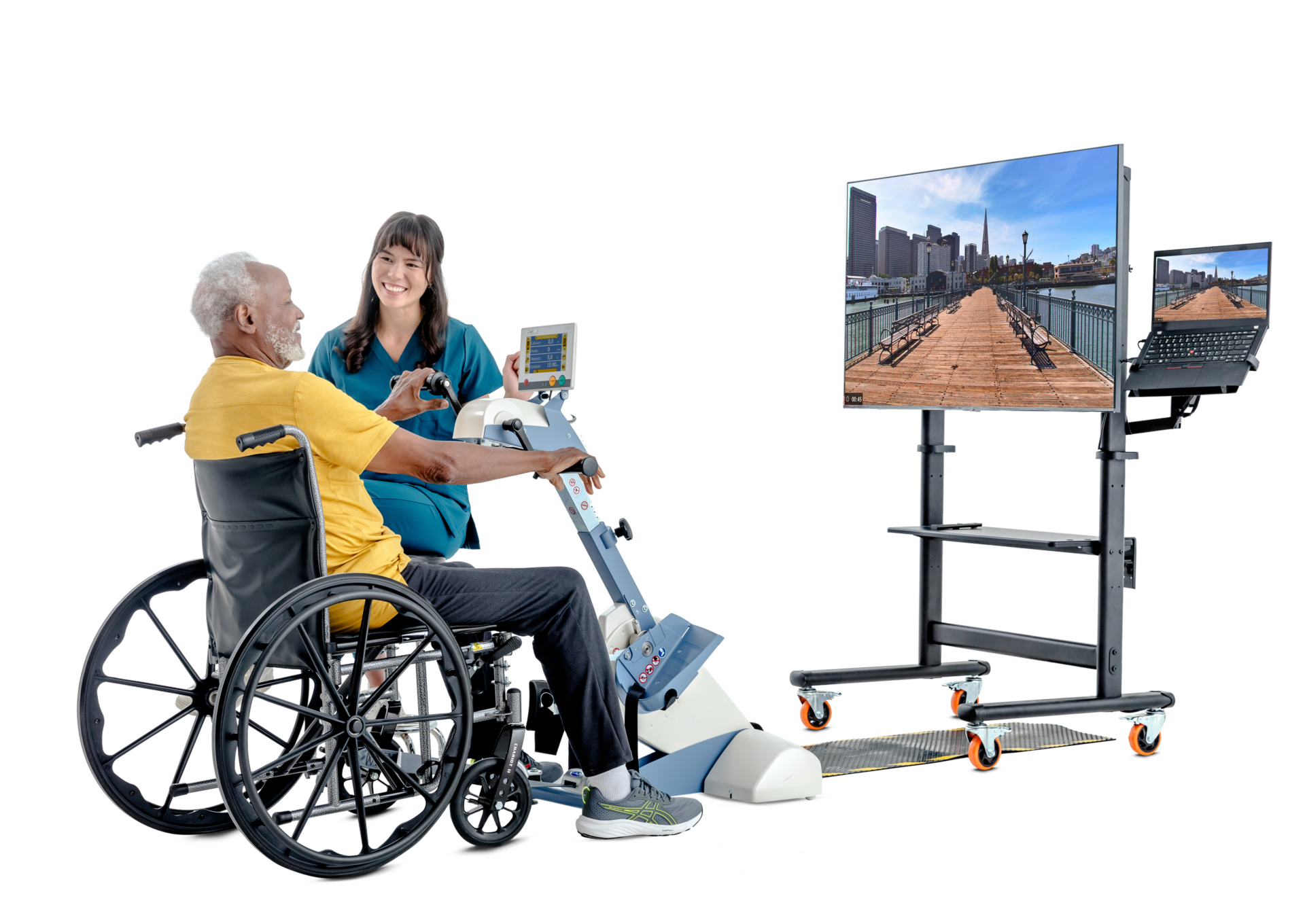
The OmniCycle Connect can improve patient outcomes by using biofeedback to help patients execute upper and lower cycling exercises. Paired with OmniTour, our immersive virtual cycling technology, patients stay engaged and motivated, ensuring they get the most out of each training session.
Explore OmniCycle Connect
Transform therapeutic exercise with the OmniCycle Connect Active-Assist Cycle by Accelerated Care Plus.
- Kardan, M., Akter, T., Iqbal, M., Tcymbal, A., Messing, S., Gelius, P., & Abu-Omar, K. (2023). Cycling in older adults: A scoping review. Frontiers in Sports and Active Living, 5, 1157503. https://doi.org/10.3389/fspor.2023.1157503 ↩︎
MRK-BLOG-016
While it’s been proven that cycling is an effective rehab tool for building aerobic capacity and improving strength, its benefits extend far beyond—from improving gait and core stability to boosting mental health and cognitive function. Keep reading to learn why cycling is a key component of many of our evidence-based clinical programs and how to incorporate it into your rehab program to enhance patient outcomes and quality of life.

